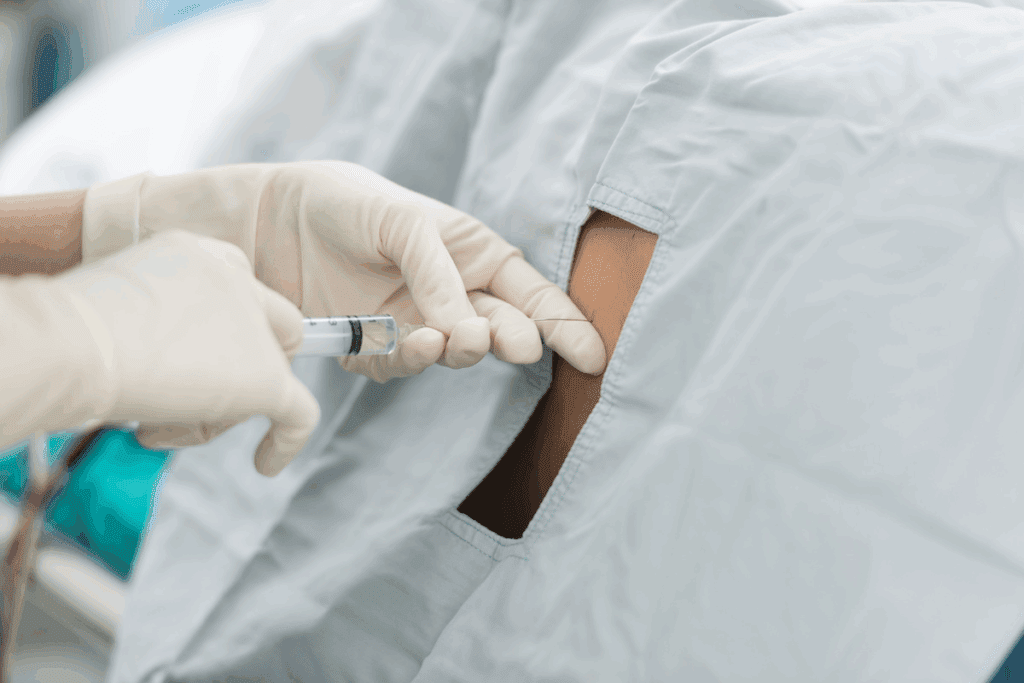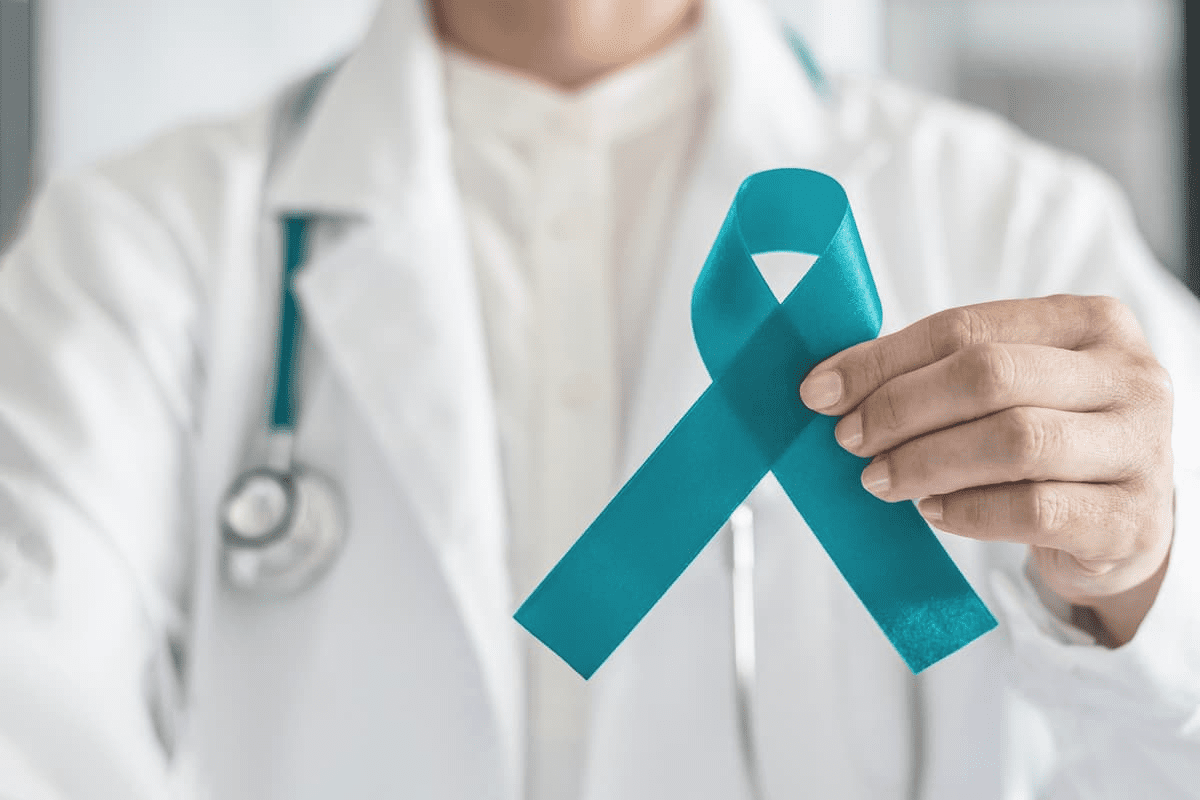Last Updated on November 26, 2025 by Bilal Hasdemir

Get key epidural steroid injection aftercare tips to ensure fast, smooth recovery after the procedure. Recovering from an epidural steroid injection needs careful planning and attention. At Liv Hospital, we know how important aftercare is for the best results. We aim to help you through the recovery, so you can get back to your life confidently.
It’s key to understand the recovery process and handle any side effects. We’ll share 12 important tips to make your recovery easier.
By following these tips, you can avoid problems and get the most from your treatment. We’re here to support you every step of the way.
Key Takeaways
- Understand the importance of proper aftercare following an epidural steroid injection.
- Learn 12 essential tips for a smooth recovery.
- Discover how to manage any side effects.
- Maximize the benefits of your epidural steroid injection treatment.
- Minimize complications with careful planning and attention to detail.
Understanding the Epidural Steroid Injection Procedure

It’s important for patients to know about the epidural steroid injection procedure. We’ll explain how it works and its role in treating back pain.
What Is an Epidural Steroid Injection?
An epidural steroid injection puts anti-inflammatory medicine near the spinal cord. This helps reduce swelling and eases pressure on nerves. It’s a way to help those with chronic back pain.
“Epidural steroid injections are effective for many spinal pain issues,” doctors say. The medicine used is a corticosteroid, known for its strong anti-inflammatory effects.
Common Conditions Treated with ESI
Epidural steroid injections are used for herniated discs, spinal stenosis, and sciatica. These conditions cause pain and discomfort due to nerve root inflammation and compression.
- Herniated discs: Occur when the soft inner gel of the disc leaks out through a tear, irritating nearby nerves.
- Spinal stenosis: A narrowing of the spaces within the spine, which can put pressure on the nerves.
- Sciatica: Characterized by pain that radiates along the path of the sciatic nerve, extending from the lower back down to the legs.
Epidural steroid injections target inflamed areas to relieve pain. They improve life quality for those with these conditions. The procedure is guided by fluoroscopy to ensure accurate medication placement.
It’s important to remember that epidural steroid injections are part of a bigger treatment plan. This plan may include physical therapy, lifestyle changes, and other treatments. Our healthcare team works with patients to find the best treatment approach.
What to Expect Immediately After Your Procedure

Knowing what happens after an epidural steroid injection helps patients get ready for recovery. The first hours after the procedure are key for a smooth recovery.
The First Few Hours Post-Injection
Right after, patients are watched for 15 to 30 minutes to see if they have any bad reactions. Doctors will check your vital signs and how you’re doing. It’s important to have someone with you to drive you home because you might feel sleepy or numb.
In the first hours, you might feel:
- Mild discomfort or pain at the injection site
- Temporary numbness or weakness in the legs
- Drowsiness or fatigue
- Mild headache
How Long After an Epidural Can You Walk
You can usually walk a few hours after, but it depends on you. Start with short walks and do more as you feel better. Always follow your doctor’s advice on what to do after the procedure.
Transportation and Initial Monitoring
Having someone drive you home is a must. The injection and any sedation can make it hard to drive safely. When you get home, it’s good to have someone with you for a few hours to watch over you and help if needed.
At home, watch for any strange symptoms like severe pain, numbness, or trouble with your bladder or bowels. If you notice these, get medical help right away.
Tip 1: Follow Proper Rest Guidelines After Epidural Steroid Injection
After getting an epidural steroid injection, it’s key to rest properly. This helps your body heal and makes the treatment work better. It’s important to know why rest is vital and how to make your recovery space comfy.
Duration of Rest
How long you should rest varies, but usually, 24 to 48 hours is best. Try to avoid hard work, lifting heavy, and bending during this time.
| Activity | Recommended Restriction Period |
| Strenuous Activities | 24-48 hours |
| Heavy Lifting | 24-48 hours |
| Bending or Twisting | 24-48 hours |
Creating a Comfortable Recovery Environment
To make recovery easier, make your space comfy. This means:
- Keeping your area quiet and the right temperature.
- Having what you need close to avoid getting up a lot.
- Using pillows and cushions to support your back.
Sleeping Positions to Consider
Choosing the right sleep position is important for comfort. We recommend:
- Sleeping on your back with a pillow under your knees to ease spine pressure.
- Or sleeping on your side with a pillow between your knees for spine alignment.
- Avoiding stomach sleeping to prevent spine arching and discomfort.
By following these tips, you can make a great recovery space after an epidural steroid injection.
Tip 2: Manage Injection Site Care Effectively
Good care of the injection site is key to a smooth recovery after an epidural steroid injection. Taking care of the site helps avoid infections and speeds up healing.
Keeping the Injection Area Clean
Keeping the area clean around the injection site is very important. Gently wash the area with mild soap and water as soon as it’s safe, usually within 24 hours after the procedure. Stay away from harsh or scented soaps that could make the skin irritated.
Normal vs. Concerning Injection Site Reactions
It’s normal to see some redness, swelling, or bruising at the injection site. But, severe pain, increasing redness, or pus mean you might have an infection. Watch the site closely and call your healthcare provider if you see any worrying signs.
- Normal reactions may include mild redness or swelling.
- Concerning reactions include severe pain, fever, or signs of infection.
Showering and Bathing Guidelines
You can usually shower within 24 hours after the procedure. But, avoid submerging the injection site in water (e.g., taking a bath or swimming) for at least 48 hours. Gently pat the area dry; avoid rubbing or scrubbing.
By following these guidelines, you can help ensure a smooth and complication-free recovery from your epidural steroid injection.
Tip 3: Understand the Typical Epidural Steroid Injection Recovery Time
Knowing how long it takes to recover from an epidural steroid injection is key. It helps manage your expectations and makes the recovery smoother. The time it takes can differ from person to person, but there are common guidelines to follow.
General Recovery Timeline Expectations
Most people can start with light activities a few days to a week after the shot. But, it might take longer to see the full effects of the injection.
The recovery can be divided into several stages:
- Immediate recovery (0-24 hours): Rest and initial monitoring
- Short-term recovery (1-7 days): Gradual return to light activities
- Medium-term recovery (1-2 weeks): Increased activity levels and possible pain reduction
- Long-term recovery (2-4 weeks and beyond): The full benefits of the injection become clear
Factors That Influence Recovery Speed
Several things can affect how fast you recover from an epidural steroid injection. These include:
| Factor | Description | Impact on Recovery |
| Overall Health | Pre-existing health conditions | Patients with fewer health issues tend to recover faster |
| Age | Patient’s age | Older patients may require more time to recover |
| Condition Severity | Severity of the spinal condition being treated | More severe conditions may require longer recovery times |
| Injection Technique | Method used for the epidural steroid injection | Proper technique can minimize complications and speed recovery |
When Full Benefits Typically Appear
The full effects of an epidural steroid injection usually show up in 2-4 weeks. This is because the steroid medication needs time to reduce inflammation and ease pressure on the nerves.
It’s important to be patient and follow the post-procedure instructions carefully. This increases your chances of a successful outcome.
Tip 4: Implement Proper Pain Management Strategies
Managing pain well is key to a smooth recovery after an epidural steroid injection. We’ll share important strategies to help you manage pain during your recovery.
How Long Does Back Pain Last After Epidural
Many patients wonder how long back pain lasts after an epidural steroid injection. The time it takes for pain to lessen can vary a lot. Some feel better right away, while others see improvement over days or weeks.
It’s common for pain to seem worse before it gets better. This is often a sign that the treatment is working. On average, pain relief from an epidural steroid injection can last from weeks to months.
| Time Frame | Expected Pain Level |
| First 24-48 hours | Mild to moderate pain |
| 2-7 days | Gradual improvement |
| 1-3 weeks | Significant pain relief |
When to Use Ice vs. Heat Therapy
Ice and heat therapy can both help with pain during recovery. Ice is used to reduce swelling and numb pain. Heat therapy relaxes muscles and boosts blood flow.
- Use ice packs for acute pain or inflammation, usually within the first 48 hours post-injection.
- Apply heat therapy after the initial 48 hours to relax muscles and enhance healing.
Medical Expert, a pain management expert, says, “Alternating between ice and heat therapy can provide optimal pain relief for patients recovering from epidural steroid injections.”
“The key to effective pain management is understanding when to apply different therapies. Ice helps with initial inflammation, while heat promotes long-term healing.”
Managing Temporary Pain Flare-Ups
Even though epidural steroid injections are effective, some patients may have temporary pain flare-ups. To handle these, we suggest:
- Resting and avoiding strenuous activities
- Using over-the-counter pain medications as directed by your healthcare provider
- Applying ice or heat therapy as needed
- Engaging in gentle stretching exercises
If pain flare-ups don’t get better or get worse, it’s important to talk to your healthcare provider for more advice.
Tip 5: Follow Essential Epidural Steroid Injection Aftercare Guidelines
To get the most from your epidural steroid injection, follow the aftercare instructions closely. These guidelines help your recovery, reduce side effects, and boost treatment benefits.
Medication Management Post-Procedure
Your healthcare provider might suggest medications for pain or symptoms after the injection. It’s important to take them as directed. Also, tell your doctor about any other medicines you’re on to avoid bad reactions.
Key considerations for medication management include:
- Adhering to the prescribed dosage and schedule
- Reporting any side effects or concerns to your healthcare provider
- Informing your healthcare provider about all medications and supplements you’re taking
Hydration and Nutrition Recommendations
Drinking enough water and eating well are key to recovery. Water helps your body heal and keeps spinal discs healthy. A diet full of nutrients also boosts your overall health and treatment results.
| Nutritional Element | Benefit | Food Sources |
| Protein | Supports tissue repair | Lean meats, fish, eggs, dairy |
| Omega-3 Fatty Acids | Reduces inflammation | Fatty fish, nuts, seeds |
| Calcium | Supports bone health | Dairy products, leafy greens |
Avoiding Certain Activities and Substances
Stay away from heavy lifting, bending, and hard exercises after the injection. Also, avoid alcohol and smoking. These can slow down healing.
By sticking to these aftercare tips, you can help your epidural steroid injection work better. Always talk to your healthcare provider for specific advice and support during your recovery.
Tip 6: Gradually Return to Physical Activities
When you start recovery from epidural injection, it’s key to slowly get back to physical activities. This method prevents problems and makes your return smoother.
Safe Activity Progression Timeline
Most patients can start with light activities a few days post-procedure. But, always listen to your healthcare provider’s advice. Everyone recovers differently. Start with easy movements and then get more intense and longer.
General guidelines for activity progression:
- Light activities (e.g., walking, light stretching) can typically be resumed within 2-3 days.
- Moderate activities (e.g., household chores, driving) may be resumed after 3-7 days, depending on your comfort level and healthcare provider’s advice.
- Strenuous activities (e.g., heavy lifting, intense exercise) should be avoided for at least a week or as advised by your healthcare provider.
When to Resume Driving
Driving again is a big step after an epidural steroid injection. Wait until you’re off narcotic pain meds and have full leg strength. This usually takes 24 to 48 hours, but your healthcare provider’s advice is key.
Before driving, make sure you can:
- Perform emergency maneuvers safely.
- React quickly to road conditions.
- Wear a seatbelt comfortably.
Returning to Work Considerations
Resuming driving and going back to work are big steps in your recovery. When you can go back to work depends on your job and how you’re feeling. Desk jobs might be sooner, but jobs that are more physical might take longer.
Think about these things when planning to go back to work:
- Discuss your job requirements with your healthcare provider.
- Plan for gradual return to full duties.
- Be prepared to make adjustments to your workspace if needed.
Tip 7: Monitor for Signs of Improvement or Complications
Recovering well after an ESI means watching for healing signs and warning signs. Knowing what to look for can greatly affect your recovery.
Positive Recovery Indicators
Look for signs your body is healing well after the injection. These signs include:
- Reduced pain levels in the affected area
- Improved mobility and flexibility
- Enhanced ability to perform daily activities
- Better sleep quality due to decreased discomfort
Tracking these improvements can help you stay motivated and confident in your recovery process.
Warning Signs That Require Medical Attention
Complications from an ESI are rare but can happen. Knowing the warning signs is key. These signs include:
| Symptom | Description |
| Increased pain | Severe or worsening pain at the injection site or radiating to other areas |
| Fever or chills | Elevated body temperature or feeling cold, which could indicate infection |
| Numbness or weakness | Unexpected or severe numbness, weakness, or tingling in the legs or other areas |
| Bowel or bladder changes | Difficulty controlling bowel movements or urination |
As one medical professional noted,
“Prompt recognition of these warning signs is key for timely intervention and preventing serious complications.”
Tracking Your Recovery Progress
Keeping a recovery journal is a good idea. Write down your daily experiences, like pain levels and any symptoms. This helps you and your doctor understand your recovery better.
By staying informed and proactive, you can make the most of your recovery from an epidural steroid injection. This way, you can aim for the best possible outcome.
Tip 8: Implement Supportive Therapies During Recovery
Supportive therapies can greatly help your recovery after an epidural steroid injection. They work alongside the injection to offer the best relief and support your health.
Gentle Stretches and Movements
Gentle stretches and movements are key during recovery. They keep you flexible, reduce stiffness, and improve blood flow. Start with simple exercises like pelvic tilts, knee to chest stretches, and gentle walks. Always do these under a healthcare professional’s guidance for safety and correctness.
Benefits of Gentle Exercises:
- Improved flexibility
- Reduced muscle stiffness
- Enhanced blood circulation
Complementary Approaches for Recovery
Other than physical exercises, many complementary methods can aid in recovery. These include physical therapy, massage therapy, and acupuncture. Physical therapy strengthens muscles around the spine. Massage therapy eases muscle tension and promotes relaxation. Acupuncture, with thin needles in specific body points, helps manage pain and aids healing.
Always talk to your healthcare provider before trying new therapies to make sure they’re right for you.
Posture and Body Mechanics
Good posture and proper body mechanics are critical during recovery. Proper posture lessens spine strain and prevents injury. Be mindful of your posture daily, use ergonomic furniture, and stretch regularly.
Tips for Good Posture:
- Stand up straight with your shoulders back
- Avoid slouching or leaning forward
- Use a supportive chair when sitting
By adding these supportive therapies to your recovery plan, you can improve your healing and get the most from your epidural steroid injection treatment.
Tip 9: Prepare for Follow-Up Appointments
As you recover from your epidural steroid injection, getting ready for follow-up appointments is key. These visits are important to check if the treatment is working and if more steps are needed.
Questions to Ask Your Healthcare Provider
Make a list of questions for your healthcare provider at your follow-up appointments. Some important ones include:
- What improvements can I expect from the epidural steroid injection?
- How long will it take to experience the full benefits of the treatment?
- Are there any possible side effects or complications I should know about?
- What are the next steps if the injection doesn’t give enough relief?
These questions can help you understand your recovery and what’s next.
Documenting Your Recovery Experience
Keeping a record of your recovery is very helpful. Note your pain levels, any symptom changes, and how you’re feeling. Documenting your recovery helps spot patterns and gives your healthcare provider important info.
| Day | Pain Level (1-10) | Notes |
| 1 | 8 | Some discomfort after injection |
| 3 | 6 | Noticing slight improvement |
| 7 | 4 | Significant reduction in pain |
When Additional Injections Might Be Considered
In some cases, you might need more epidural steroid injections for better relief. This depends on how bad your condition is, how you react to the first injection, and if your symptoms keep coming back.
Your healthcare provider will check on your progress and talk about if more treatment is needed. It’s important to listen to their advice and follow their guidance during your recovery.
Tip 10: Develop a Long-Term Pain Management Plan
A good long-term pain management plan can really help your recovery and well-being. After an epidural steroid injection, it’s key to focus on strategies for lasting relief. These strategies should also improve your quality of life.
Lifestyle Modifications for Ongoing Relief
Making lifestyle changes is important for managing pain well. Maintaining a healthy weight is key, as extra weight can strain your spine. Eating a balanced diet full of nutrients is also important for your health.
Other good changes include:
- Improving your posture to reduce strain on your spine
- Avoiding smoking, as it can negatively impact circulation and healing
- Managing stress through techniques like meditation or deep breathing exercises
Exercise Routines for Spine Health
Regular exercise is key for long-term pain management. Gentle exercises that strengthen the muscles around your spine are very beneficial. We suggest activities like:
- Yoga or Pilates to improve flexibility and strength
- Low-impact aerobics, such as walking or swimming, to enhance cardiovascular health
- Specific exercises targeting the core muscles to support your spine
| Exercise Type | Benefits | Frequency |
| Yoga/Pilates | Improved flexibility and strength | 2-3 times a week |
| Low-impact aerobics | Enhanced cardiovascular health | 3-4 times a week |
| Core strengthening | Spine support and stability | Daily |
Preventing Future Episodes
To prevent future pain episodes, combine lifestyle changes and exercise routines. Also, be mindful of your body’s limits and avoid activities that strain your spine.
By following these strategies daily, you can lower the chance of future pain episodes. This will help you keep the benefits of your epidural steroid injection.
Conclusion: Setting Realistic Expectations for Recovery from Epidural Steroid Injection
Recovery from an epidural steroid injection takes time and patience. We’ve shared 12 tips to help you through this journey. These tips aim to guide you smoothly through your recovery.
Everyone’s recovery is different. By following our aftercare tips and setting realistic goals, you can improve your recovery time. It’s key to manage your pain and slowly get back to activities.
Knowing what to expect and understanding how your recovery time is influenced is important. We want to give you the knowledge and support to make good choices about your care.
Remember, having realistic expectations is key to a successful recovery. With the right mindset and care, you can get the most out of your epidural steroid injection. This will help improve your life quality.
FAQ
How long should you rest after an epidural steroid injection?
Rest for at least 24 hours after the procedure. This allows the steroid to work and reduces side effects.
How long does back pain last after an epidural steroid injection?
Back pain can last from a few days to weeks. Some discomfort at the injection site is common but usually goes away in a few days.
When can you walk after an epidural steroid injection?
You can walk soon after the procedure. But, it’s best to have someone with you for safety due to possible numbness or weakness in your legs.
How long does it take to experience the full benefits of an epidural steroid injection?
The full effects can take days to weeks. The steroid needs time to reduce inflammation and relieve nerve pressure.
What are the signs of improvement after an epidural steroid injection?
Look for less pain, better mobility, and easier daily activities. You might also notice less numbness, tingling, or weakness.
When should you seek medical attention after an epidural steroid injection?
Seek help for severe pain, increasing numbness or weakness, trouble with bowel or bladder control, or signs of infection like redness or fever at the site.
Can you shower or bathe after an epidural steroid injection?
Avoid soaking the injection site in water for 24 hours. Showering is usually okay, but always follow your healthcare provider’s instructions.
How long should you avoid strenuous activities after an epidural steroid injection?
Avoid heavy lifting, bending, or strenuous activities for several days to a week or more. This depends on your condition and the doctor’s advice.
Can you drive after an epidural steroid injection?
It’s best to have someone else drive you home. Numbness, weakness, or discomfort might affect your ability to drive safely.
When can you return to work after an epidural steroid injection?
Return to work timing varies. It depends on your job, condition, and doctor’s advice. Some might go back sooner, while others need more time.
References
- Bicket, M. C., Lucas, J., & Wu, C. L. (2015). Epidural steroid injections for low back pain. Anesthesia & Analgesia, 121(1), 252-263. https://pubmed.ncbi.nlm.nih.gov/25853834/






